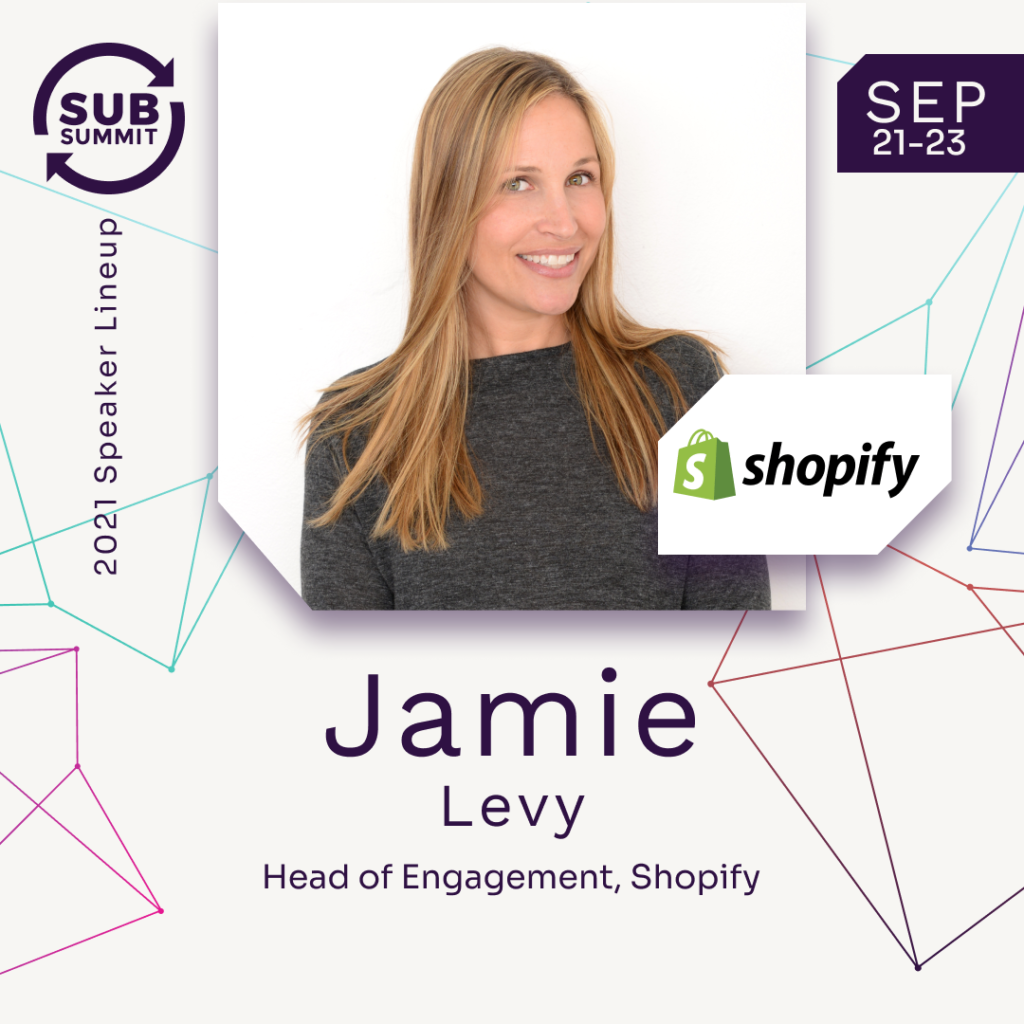
It’s rare for a women-led business to go public, especially in the subscription space. At a glance, this raises red flags of unequal representation. But is the lack of women taking their businesses public really a problem?
For a fresh take on going public, we spoke with Jamie Levy, Head of Merchant Engagement at Shopify Plus, a cost-effective enterprise platform that’s built for our rapidly changing e-commerce market.
Levy’s experience at Shopify is all about bringing the human quality of business back to e-commerce by letting brands hear from their counterparts. “Building a business is incredibly difficult and lonely,” she says. “So it’s always been important to me to create the kind of environment where we can put brands together.”
Read on to find out what Levy has observed when it comes to measuring success and why going public might not be the best path for a women-led business.
Feedback, Revenue & What Really Matters
Levy’s mission was inspired by a need to give other brands a closer look under Shopify’s hood. As she found ways to bring people in and tell Shopify’s story, she was able to simultaneously validate the business in the Software as a Service space and solicit valuable feedback.
“I realized the importance of not only showing brands who we are, but also giving Shopify the opportunity to hear directly from these brands,” Levy says. “And I thought, why not kill two birds and let brands hear from each other?”

Her solution was to run two-and-a-half-day events for brand executives to learn about Shopify and each other. The feedback was overwhelmingly positive, so from there, she moved to hosting assemblies – literally using round tables – to facilitate even more connections through conversations.
We are often tempted to idolize businesses based on their revenue numbers. But Levy has seen firsthand that, in such a rapidly changing industry, even businesses earning as much as $5 million per year can learn a lot from those earning $50,000 per year. Simply by allowing ourselves to collaborate and come together in supportive connections, subscription industry leaders can ask and answer each other’s questions that greatly benefit all parties involved.
More than revenue, what matters is understanding your values and the impact you want to have as a company. Doing so will empower you to take your women-led business to the level of success you really want it to achieve.
Strengths of a Women-Led Business
According to Insider, only 22 women-led businesses in history have gone public. Only two of those are subscription businesses — Bumble and Stitch Fix.
While representation and equal opportunity are vital to progress, taking a women-led business public may not be the most important goal. For some businesses, it’s not a goal at all.
“There’s such a massive difference between individuals who build a brand because it’s their life’s work and individuals who build a brand with the intention of an IPO or an investment or an exit,” Levy says. It’s important to know what your goals for your business are instead of trying to force it to meet outside definitions of success.
More than pushing for more women-led businesses to go public, Levy says we need to tell more stories about women founders that aren’t glamorized. “Building a business can be really difficult,” she says. “Building a business as a woman adds additional challenges, but we’re strong. We’ve endured a lot.”
Levy has seen countless examples of women supporting other women-led businesses, especially through investments. She’s also observed that women have a particular ability to trust their gut, multitask, and make decisions without needing to hash them out in boardrooms. Going IPO doesn’t necessarily play to these strengths.
Human-Focused Measures of Success
Instead of thinking it has to go public, a women-led business should define its own measure of success. “There’s a different kind of soul for a business that has no intention of going public,” Levy says. “Your business is an extension of you, and to give it away or invite other people in is a totally personal thing.”
So how does one measure the success of a women-led business? Levy identifies several, more accurate, determiners. These include quantitative measures, such as:

- Sustained year-over-year growth over a certain number of years. Example: Inspiranza Designs. The company’s three-year growth of 3,099% as of 2019 put it on the Inc. 5000 list of Fastest-Growing Privately Held Companies in America.
- Ramping your brand. Example: Until a book on female-owned-businesses branding is written, check out the countless vignettes in Dr. James F. Richardson’s book of the same title.
- Thoughtful expansion of your product line. Example: Parachute, which started out with bedding products and has since expanded its offerings to include a multitude of other household items and services.
Additionally, Levy’s measures of success include qualitative ones, such as:
- Having a strong brand identity and awareness. Example: Captain Blankenship. The company’s branding, products, and packaging embody the ocean and forest landscapes that inspired the hair and skincare products in the first place.
- Allowing for dialogue with customers and potential customers. Example: Sips By, a tea subscription box that customizes each individual box to the customer’s preferences.
- Highlighting the humans behind the products, allowing for closer human connection to the company. Example: Feminist Book Club. The company’s ‘About’ page features photos and bios for every member of its team, from the CEO to blog contributors and discussion moderators.
While there are always avenues in which we need to increase representation of women and Black, Indigenous, and People-of-Color (BIPOC) individuals, going IPO isn’t always the only — or best — way for a women-led business to succeed.
Choosing the Right Path
With that said, how do you decide if taking your women-led business public is the right path for you? Levy recommends asking yourself why you feel as though you should proceed with an IPO.
Is it because you’ve been taught that going public is the way to measure your business’s success? Or is it genuinely what you want to do as an exit or growth strategy? If going public is not in itself your goal — if you really need capital, for example — there may be better options out there.
Levy makes it clear that going public is not a bad thing. For some people — even some women-led businesses — it is absolutely the right choice (just ask the 22 women we mentioned above). But it isn’t for everyone, and it’s certainly not the only measure of success.
Dig deep into your motivations first, and focus on doing what’s best for you and your business.


